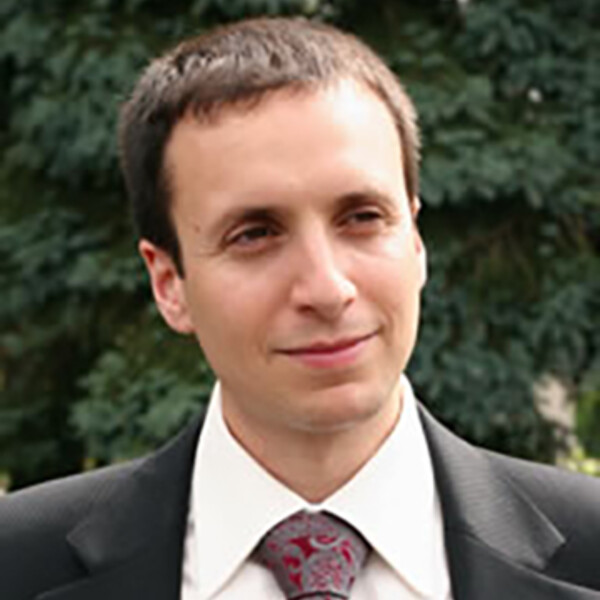John Rubinstein
PhD, Cambridge University, United Kingdom

At A Glance
- Electron cryomicroscopy (cryo-EM) of macromolecular machines and cryo-EM method development
- Molecular bioenergetics
- Structure-based drug discovery for tuberculosis and non-tuberculosis mycobacterial infections
- Vacuolar-type ATPases in the immune system and neurobiology
Short Bio
Dr. Rubinstein is a Senior Scientist in the Molecular Medicine Program at the Hospital for Sick Children, where he has worked since 2006. He is a Professor in the Departments of Medical Biophysics and Biochemistry at the University of Toronto, and a Tier 1 Canada Research Chair in Electron Cryomicroscopy. He received his PhD from Cambridge University for work done at the Medical Research Council laboratories under the supervision of Sir John E. Walker (Nobel Prize for Chemistry, 1997) and Dr. Richard Henderson (Nobel Prize for Chemistry, 2017). His accomplishments have been recognized by awards including a CIHR New Investigator Award, the GE Healthcare New Investigator Award from the Canadian Society for Molecular Biosciences, the Burton Medal from the Microscopy Society of America, an honorary Doctorate from Stockholm University, and Fellowship in the Royal Society of Canada.
Research Synopsis
The Rubinstein laboratory investigates the structure and function of macromolecular assemblies using electron cryomicroscopy (cryo-EM), image analysis, biochemistry, and molecular biology. A major focus of the laboratory is advancing cryo-EM itself. We develop new specimen-preparation methods, imaging approaches, and data-processing algorithms, including strategies to support drug-discovery efforts. Much of this technology development is carried out in collaboration with companies that produce commercial specimen-preparation devices, electron microscopes, and cryo-EM software.
Biological research in the laboratory centers on two main directions: mycobacterial oxidative phosphorylation and vacuolar-type (V-type) ATPases.
Tuberculosis (TB), caused by Mycobacterium tuberculosis, is the world’s leading cause of death from infectious disease and is becoming increasingly drug resistant. The laboratory provided the first high-resolution structures of ATP synthases (e.g., Guo et al., Science, 2017; Guo et al., eLife, 2018), key enzymes in oxidative phosphorylation. Building on this foundation, we now use cryo-EM to elucidate how both experimental and approved TB therapeutics target mycobacterial oxidative phosphorylation. We work closely with TB biologists, drug-discovery experts, and medicinal chemists to develop new therapeutics aimed at shortening and improving TB treatment, enabling effective therapy for non-tuberculous mycobacterial infections, and combatting the growing challenge of drug-resistant TB.
The laboratory also investigates eukaryotic V-type ATPases, proton pumps essential for the function of lysosomes, the immune system, and neuronal signaling. Our group determined the first high-resolution structures of these complex machines (e.g., Zhao et al., Nature, 2015; Mazhab-Jafari et al., Nature, 2016; Abbas et al., Science, 2020; Coupland et al., Science, 2024). We are now focused on understanding how V-ATPases are regulated, how pathogens manipulate them, and how their activity can be therapeutically modulated to treat the many human diseases associated with V-ATPase dysfunction.
Recent Publications
- Di Trani JM, Yu J, Courbon GM, Lobez Rodriguez AP, Cheung C-Y, Liang Y, Coupland CE, Bueler SA, Cook GM, Brzezinski P, Rubinstein JL (2025). Cryo-EM of native membranes reveals an intimate connection between the Krebs cycle and aerobic respiration in mycobacteria. Proceedings of the National Academy of Sciences (USA) 122, e2423761122. [bioRxiv2024.10.09.617439]
- Karimi R, Coupland CE, Rubinstein JL (2024). Vesicle Picker: A tool for efficient identification of membrane protein complexes in vesicles. Journal of Structural Biology 16, 108148. [bioRxiv2024.07.15.603622]
- Coupland CE, Karimi R, Bueler SA, Liang Y, Courbon GM, Di Trani JM, Wong CJ, Saghian R, Youn J-Y, Wang L-Y, Rubinstein JL (2024). High-resolution cryo-EM of V-ATPase in native synaptic vesicles. Science 385, 168-74. [bioRxiv2024.04.01.587493]
- Liang Y, Bueler SA, Cook GM, Rubinstein JL (2025). Structure of mycobacterial NDH-2 bound to a 2-mercapto-quinazolinone inhibitor. Journal of Medicinal Chemistry 68, 7579-91. [bioRxiv2025.01.08.631920]
- Courbon GM, Palme PR, Mann L, Richter A, Imming P, Rubinstein JL (2023). Mechanism of mycobacterial ATP synthase inhibition by squaramides and second generation diarylquinolines. EMBO Journal 42, e113687. [bioRxiv 2023.02.03.527018]
- Guo H, Courbon GM, Bueler SA, Mai J, Liu J, Rubinstein JL (2021). Structure of mycobacterial ATP synthase bound to the tuberculosis drug bedaquiline. Nature 589, 143-147. [bioRxiv2020.08.06.225375]
- Abbas Y, Wu D, Bueller SA, Robinson CV, Rubinstein JL (2020). Structure of V-ATPase from mammalian brain. Science 367, 1240-6.
- Guo H, Bueler SA, Rubinstein JL (2017). Atomic model for the dimeric FOregion of mitochondrial ATP synthase. Science 358, 936-40.
- Punjani A, Rubinstein JL, Fleet DJ, Brubaker MA (2017). cryoSPARC: algorithms for rapid unsupervised cryo-EM structure determination. Nature Methods, 14, 290-6.
Graduate Students
Ryan Karimi
Mariia Khamina
James Wang
